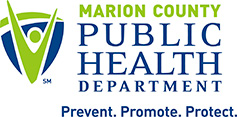COVID-19 virus primarily spreads through people breathing it in, or by people touching contaminated surfaces and then touching their faces. The virus gets into the air through people sneezing or coughing, but can also be released by talking (especially loud talking or singing), or even breathing (especially heavy breathing). The virus can build up to infective doses in indoor air if there is not good air circulation. With good air circulation, old indoor air is frequently replaces by new outdoor air. The old indoor air is sent outside, where any concentration of the virus is quicly diluted to a much safer level.
* For spaces with windows, open the windows, especially when people are in the space.
* Open outdoor air dampers as much as possible to get outdoor air into the building.
* Check to make sure all exhausts are working. Many of the exhausts are in the restrooms. This is an easy check: hold a piece of toilet tissue paper to the exhaust. If it DOESN’T pull onto the exhaust’s surface, then the exhaust isn’t working.
* Turn thermostat settings to the “ON” position to have air moving through the system and filter at all times.
* Have your HVAC/ventilation serviced, including filter changes, coil cleaning, and drain pan free of obstructions.
* If your system can accommodate them, use MERV13 or higher rated filters.
* CDC: “Ensure that ventilation systems operate properly and increase circulation of outdoor air as much as possible by opening windows and doors, using fans, etc. Do not open windows and doors is they pose a safety risk to children using the facility.” Please click here for more information.
* CDC: “The risk of spreading the virus that causes COVID-19 through ventilation systems has not been studied, but likely is low. Routine HVAC maintenance is recommended. Although it is never the first line of prevention, consider general ventilation adjustments in your workplace, such as increasing ventilation and increasing the amount of outdoor air used by the system. Maintain the indoor air temperature and humidity at comfortable levels for building occupants.” Please click here for more information.
* Indiana State government: “Increase ventilation within the facility”. Please click here for more information.
Ventilation consideration when re-opening buildings
Related to this, here is CDC guidance about ventilation consideration when re-opening buildings, primarily focused on preventing mold. Please click here for more information.
1. After a building is reopened and occupied, routing (e.g., weekly) checks of the HVAC system are recommended to ensure operating efficiency.
2. During HVAC checks, inspect and replace filters as indicated or needed.
3. The frequency of HVAC system checks gradually reduced (e.g., monthly, quarterly), depending on the operational and maintenance specifications for the HVAC system.
4. Maintain indoor temperature and relative humidity within ranges recommended in ASHRAE Standard 55-107, Thermal Environmental Conditions for Human Occupancy external icon.
5. If no routine HVAC operation and maintenance program is in place for the building, one should be developed and implemented. At a minimum, consider the following:
1. Inspection and maintenance of HVAC components
2. Calibration of HVAC system controls
3. HVAC testing and balancing


